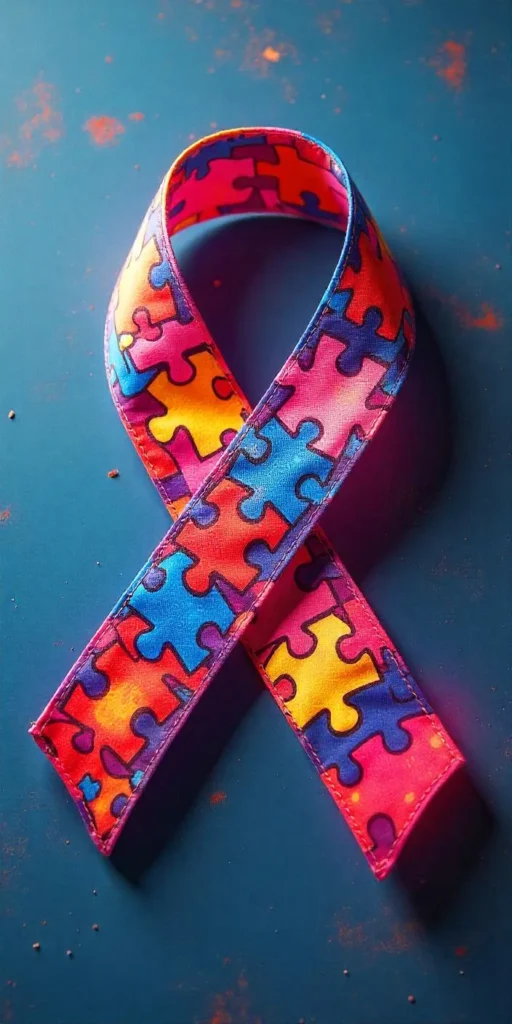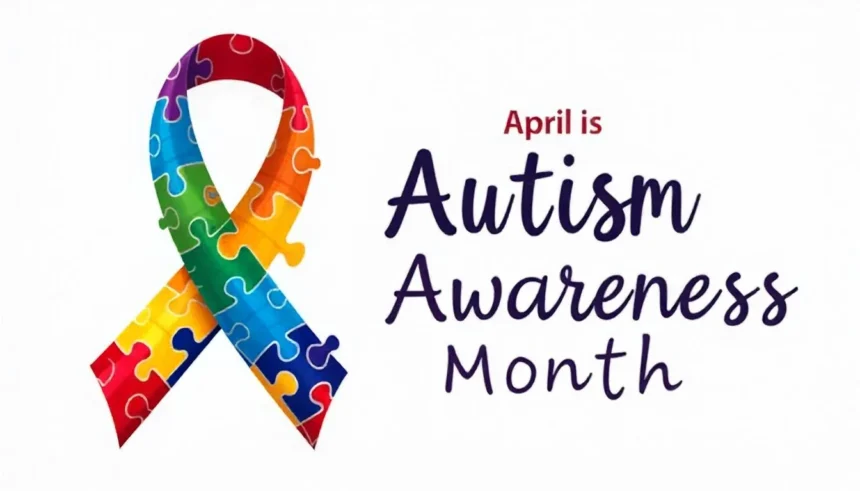Why April Is Autism Awareness Month Matters More Than Ever
Each year, we make a necessary and heartfelt pause in April to acknowledge, recognize, and act on a powerful truth: April is Autism Awareness Month. It is not a line on the calendar it’s a global movement. A call to action for understanding, acceptance, and empowerment of individuals with autism spectrum disorder (ASD). If you are a parent, teacher, ally, or simply someone who wants to become informed, this is your time to get involved.
Autism spectrum disorder is not a disease. It’s not something that needs to be “cured.” It’s a different way of experiencing the world and that difference needs to be respected, not stigmatized. This April, we celebrate Autism Awareness Month as we come together to celebrate achievements, educate communities, and build bridges of understanding that will last far beyond April’s end.
Understanding Autism: More Than a Diagnosis
Autism is a neurodevelopmental disorder that affects a person’s ability to communicate, socialize, and process information. More important, however, is the fact that autism defines a rich variety of individuals who possess exceptional gifts, talents, and perspectives.
Individuals with autism may:
- Have atypical communication styles (verbal or nonverbal)
- Exhibit intense passions for particular topics
- Experience sensory sensitivities (to sounds, lights, textures)
- Require support for daily living activities or social relationships
There isn’t a single description that suits everyone and that’s just the reason April is Autism Awareness Month is important. It reminds us to embrace the whole spectrum and offer help to each person in accordance with what they require.

The Transition From Awareness to Acceptance
Initially, it was a matter of bringing awareness: making individuals realize what autism is. Awareness, however, no longer suffices. The step after? Acceptance. Inclusion. Empowerment.
In April is Autism Awareness Month, activist groups urge communities to see beyond awareness and into action:
- Hiring neurodiverse individuals
- Supporting autism-friendly businesses
- Creating inclusive classrooms
- Respecting communication differences
How to Get Involved During April Is Autism Awareness Month
Make a difference? Here are some effective ways to express your support:
1. Wear Blue and Light It Up Blue
World Autism Awareness Day is April 2nd, and blue is the color of awareness for autism. Iconic buildings, city halls, and homes are lit in brilliant blue. Join by:
- Wearing blue shirts, ribbons, or accessories
- Socking your home or office with blue lights
- Posting blue-themed items on social media
2. Educate Yourself and Others
Knowledge is strength and empathy. During April, Autism Awareness Month, challenge yourself to:
- Reading books by authors who are on the autism spectrum
- Watching neurodiversity documentaries and TED Talks
- Invite a guest speaker to your workplace or school
3. Get Behind Autism-Specific Organizations
Donate to reputable nonprofits like:
- Autism Speaks
- The Autism Society
- The National Autistic Society
- ACEing Autism (sports programs for kids)
Your donation or volunteer time can change lives.
4. Be an Advocate
Let your voice be heard when you see exclusion and misunderstanding happening. Fight stereotypes. Be a voice for policy change that supports neurodiverse individuals.
Schools and Educators: Making Inclusion a Reality
Educators play a significant role in making inclusive environments a reality. During April is Autism Awareness Month, schools can:
- Incorporate autism-themed lesson plans
- Invite autistic advocates to speak to classes
- Create sensory-friendly spaces
- Observe “Neurodiversity Week”
These efforts create a ripple effect of awareness, not just in April, but year-round.
Autism in the Workplace: Shifting from Awareness to Opportunity
Finding employment is one of the greatest obstacles that autistic adults need to overcome. But the tide is turning. Increasingly, more companies are realizing that having neurodiverse employees leads to:
- Greater innovation
- Greater productivity
- Better retention of employees
In April, which is Autism Awareness Month, companies can:
- Offer internships or shadowing opportunities for autistic young people
- Offer autism inclusion training for staff
- Partner with autism employment organizations
Honoring Unique Strengths and Interests
Many autistic adults have strong passions trains, computer science, art, or nature. Discovering and building on these strengths results in confidence, learning, and joy.
Parents, caregivers, and educators should:
- Support exploration of interest
- Provide access to resources and mastery experiences
- Recognize achievement, big or small
Families Along the Autism Path
No one walks the autism journey alone though sometimes it feels that way. Parents, siblings, and caregivers are right there with them on a beautiful, challenging, and inspiring journey.
In April is Autism Awareness Month, it’s the time to stand with these families by:
- Offering respite care or support groups
- Listening without judgment
- Sharing in celebrating small victories
- Understanding the financial and emotional challenges involved
Kids Can Make a Difference Too!
Children’s minds are powerful.Teaching children to be allies is how to make genuine change.Educate your child about autism through:
- Audiobooks like “My Brother Charlie” or “All My Stripes”
- Classroom lessons in empathy and acceptance
- Nurturing friendship and play with all included
Common Myths About Autism: Busted
Let’s debunk a few myths:
- “People with autism have no empathy.” Autistic individuals feel deeply, perhaps just differently.
- “Happiness is caused by vaccines.” That has been disproven scientifically.
- “All autistic individuals are identical.” Autism is on a spectrum no two people are ever the same.
Why Language Matters
As we speak about autism, what we say builds attitudes. As April is Autism Awareness Month, let us ensure that we are using respectful language intentionally:
- Use “autistic person” or “person with autism” according to individual preference
- Do not use phrases like “low-functioning” or “high-functioning”
- Say “support needs” instead of “limitations”
Creating Sensory-Friendly Spaces
Most of the autistic population has heightened sensory sensitivities. Noise, light, touch these become overwhelming. Welcome spaces by:
- Using soft lighting
- Removing loud background noise
- Offering noise-canceling headphones or quiet corners
These small things make a big difference.
Autism and Mental Health
Autistic adults are more likely to feel depression, anxiety, and loneliness. During April, Autism Awareness Month, let’s shine a light on:
- Affordable access to therapy
- Peer support groups
- Mindfulness and self-care skills
Stories That Inspire
Highlighting authentic accounts of autistic individuals who are artists, scientists, entrepreneurs, and activists illustrates what is possible. Honor role models like:
- Temple Grandin (animal science expert)
- Greta Thunberg (environmental activist)
- Dan Aykroyd (actor and screenwriter)
Looking Ahead: Building an Inclusive Future
The vision is not awareness only. It’s change. It’s a world in which autistic people are not only accepted but revered. Let’s:
- Advocate inclusive policies
- Promote neurodiverse representation in media
- Hear from autistic voices in leadership
Final Thoughts: Let’s Make April Count
April is Autism Awareness Month, but the impact we create should be across the calendar, not just the month. Whatever you start the conversation, read a book, volunteer your time, or just wear blue you’re making our world a more inclusive, more compassionate place.
Let’s go from awareness to acceptance. From acceptance to celebration. From celebration to action.
Because together, we can make a difference.
🔗 Trusted Resources on Autism
Learn more and get involved during April is Autism Awareness Month by visiting these trusted organizations:
- Autism Speaks – Global leader in autism advocacy and support
- CDC – Autism Info – Official facts and data on ASD
- ASAN – Autistic-led network for rights and inclusion
- National Autistic Society – Support and education from the UK’s leading autism charity

